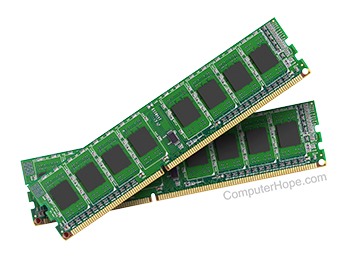RAM memory is the main memory of a device, the one where the data of the programs you are using at the moment is temporarily stored.
Its acronym stands for Random Access Memory, and it is a type of memory that can be found on any device, from desktop computers to mobile phones.
RAM has two characteristics that differentiate it from other types of storage. On the one hand, it has an enormous speed, and on the other hand, the data is only stored temporarily. This means that every time you restart or shut down your computer, the data stored in RAM is usually lost.
If you were to relate the computer to a brain, the "short-term" memory component would be called Random Access Memory (RAM).
Data that the CPU is actively working on is stored in the RAM. Although RAM can read and write data incredibly quickly—much quicker than any permanent storage solution—it loses its ability to store data if the power is switched off.
RAM kits are made up of RAM modules, like the four vibrant modules shown in the accompanying image.
As long as your motherboard has enough RAM slots, you can get one module, two modules, four modules, eight modules, or more.
RAM can be plugged into slots on a motherboard. RAM is available in various quantities, ranging from around 4GB to 64GB per module on contemporary systems. Naturally, your RAM capacity will increase as you add more modules.



No comments:
Post a Comment